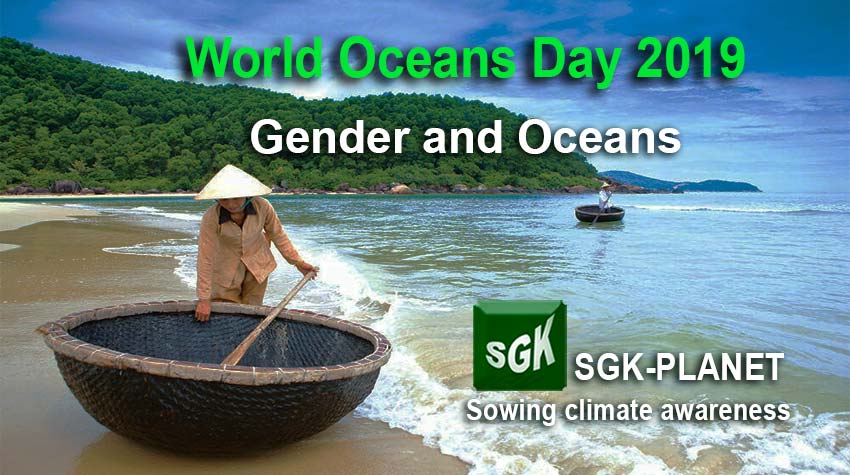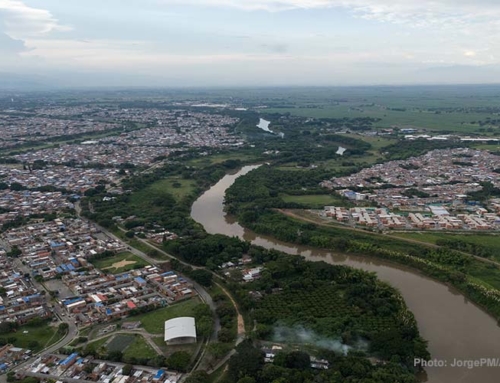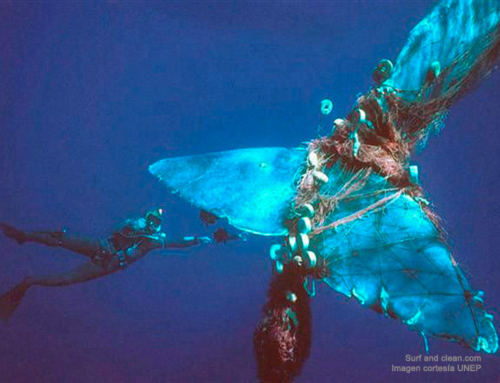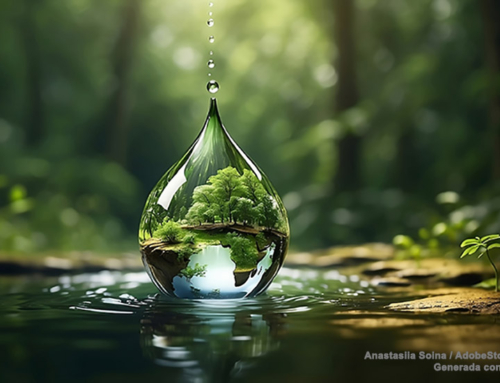World Oceans Day was proposed during the Earth Summit in Rio de Janeiro, 1992, although it was only implemented in 2008. Since then, World Oceans Day is celebrated on June 8 of each year, by resolution of the General Assembly of the UN. Its objective is to raise awareness about the importance of the oceans and how to preserve them. This year the UN has chosen two reasons to celebrate World Oceans Day.
In the first place, its organizers have chosen the theme “Gender and Oceans”, of gender equality with respect to the ocean, complying with the “Sustainable Development Goal number 5, gender equality“. To this end, they have proposed different ways of “promoting gender equality in activities related to the ocean, such as marine scientific research, fishing, work at sea, migration by sea and trafficking in persons, as well as like the formulation of policies and management. ”
In the second place, the UN is launching the world campaign “Play It Out”, to reinforce this year’s theme: #BeatPlasticPollution. Due to decades of huge use of this synthetic material, the planet is being led to a serious environmental catastrophe. 13 million tons of plastic are dumped annually into the ocean, which, among other damages, causes the death of 100,000 marine species each year. Much of the plastic remains intact for decades or centuries at sea, due to its slow degradation. Another part, which does deteriorate, melts into microplastics, which, when ingested by fish and other marine animals, enter the world food chain.
What are the oceans, what are they and how much do they measure?
The oceans are masses of salty waters that cover approximately three quarters of the earth’s surface. The names and the number of oceans existing on Earth have been determined, using a criterion that considers those masses surrounded by the spaces between continents, according to their geographical location. So we have five oceans per surface area: Pacific, 156 million km2; Atlantic 77 million km2; Indic 69 million km2; Arctic 20 million km2 and Antarctic 14 million km2.
What are the greatest depths of the oceans?
The oceanic or marine pits are narrow depths, species of natural excavations that are usually contiguous to the continental edges or next to volcanic islands. The three deepest pits in the world are in the Pacific Ocean: the graves of the Marianas with 11,034 meters of depth. The Tonga Trench, near New Zealand, at 10,822 meters; the Japanese grave, with 10,554 meters. The deepest pit of the Atlantic Ocean is that of Puerto Rico, with its 8,800 meters.
Are the oceans the other lungs of the world?
The oceans, we can affirm that, together with the Amazon rainforest, they are the lungs of the world. These huge masses of saltwater are the major producers of oxygen and act as an important sink for carbon dioxide, which considerably reduces the levels of greenhouse gases in the atmosphere, and this benefits all of humanity.
The oceans, moreover, have as a function to regulate the climate, through their capacity to absorb the heat of the Earth, distributing the temperature around the planet through the marine currents and the superficial winds of the sea, helping in this way to mitigate the effects of the change climate.
What is the world production of plastic?
Plastic is undoubtedly the most versatile, common and economic of the inventions made by us humans. But, as its use has been varied and massive, the pollution that has caused and continues to cause it is also varied and massive. In the 1950s an average of 15 million tons of plastic were used annually. Currently around 300 million tons are produced. In 60 years, we have multiplied by 20 the consumption of this material. Only about 10% is recycled and reused correctly. The rest ends up in landfills, being the most worrisome the pollution of rivers, seas and oceans, which greatly harms the aquatic fauna, in addition to seabirds.
Did you know these alarming facts about plastic?
Let’s review the following figures provided by the UN:
5 billion plastic bags are used annually.
1 million bottles are purchased per minute.
12 billion tons of plastic waste will invade landfills and the sea by 2050, if we continue at this rate.
8 million tons of plastic end up in the ocean annually.
400 years take to degrade the bags made of polyethylene, which are the majority.
At least 150 years may take to degrade the bags made with other plastics.
America, Japan and the European Union are the largest producers of plastic waste per capita.
Why are plastics thrown into the water?
Several centuries ago the world population was minimal. There was a belief that the oceans recycled any item thrown into their waters. Partly they were right, because the waste was few and of natural origin and this facilitated its recycling by salt, fauna and waves. At that time plastics and other synthetic materials did not exist. When these began to be produced, the ancient practice of using rivers, lakes and seas to dump them with their other waste continued, not to mention that the new materials could no longer be recycled with the same ease, since their degradation extends for centuries and millennia. Coupled with this, the population increase and the irrational use of plastic to make bags, wrappings, glasses, bottles and straws, among others, is creating serious problems to marine fauna and flora. The abiotic components are also affected due to the physical-chemical imbalance of the marine waters.
How do plastic objects reach the oceans?
Less than 10% of the plastic produced in the world is recycled. 12% is incinerated and about 80% ends up in landfills or in the environment, according to Greenpeace data. From landfills or other places where the plastic material has been abandoned, they can reach the sea due to storms, winds or rain. The worst thing is that in many places humans pour their waste trucks directly into rivers, whose destination, however far away the coasts, will be the sea.
What are the main pollutants of the oceans?
Pollutants include all types of substances and materials. Many cities discharge into rivers and seas large volumes of fecal material, pathogenic microorganisms, detergents, insoluble gases, all kinds of garbage, debris, glass, microplastics, as well as plastics. The worsening of the latter is that they are mostly single-use and take centuries to degrade.
Wastewater from industrial landfills contains oils, phosphates, nitrates, fluorides, lead, arsenic, selenium, cadmium, manganese, mercury and even radioactive substances. Another type of very lethal spills are oil spills. Many of these pollutants take up to thousands of years to be recycled by nature.
What are the dangers for marine flora and fauna due to the dumping of plastics?
There are several dangers to marine life. Fishing nets, for example, left or thrown into the sea can entangle fish, dolphins, sea turtles, sharks and other species. These networks restrict movement and cause the death of animals through hunger and suffocation, especially those who need to return to the surface to breathe.
What are the most polluted seas and oceans?
The pollution of the oceans is so widespread that plastic objects have been found near the maximum marine depth of the Earth. A plastic bag at 10,898 meters below sea level was found in the Mariana Trench.
China, Indonesia, the Philippines, Thailand and Vietnam each year throw more than four million tons of plastic in the seas of the planet, that is, half of the total amount, according to the NGO Ocean Conservancy. If nothing is done to prevent it, by 2025 there will be 250 million tons of plastic waste in the world’s waters, the researchers say.
In the Pacific Ocean, a large garbage island was found, which is estimated to be around 700 thousand km2, greater than the territory of France.
The Mediterranean Sea is considered the most polluted in the world. The United Nations estimated that 650 million tons of drainage, 129 thousand tons of mineral oil, 60 thousand tons of mercury, 3.8 thousand tons of lead and 36 thousand tons of phosphates are discharged each year. “It would take 100 years for their waters to be cleaned and renewed,” according to Greenpeace.
What is being done to remove plastics from the oceans?
The problem is serious and to give an answer in four lines is something like impossible. Some countries, such as Chile, have already banned the use of plastic bags in large stores and supermarkets. There are other nations that have already set a deadline for their use. Some supermarkets voluntarily stop using plastic material to pack goods. In some communities, consumers have urged others not to buy products pre-packaged with plastic. There is increasing talk of banning the sale of plates, sherbets, cutlery and plastic cups. There are different methods that are being experimented to extract the plastic from the seas. So far none has been effective. The problem is not only to extract them, but where to place those millions of tons of plastic that float or are sunk in the seas.
Sandor Alejandro Gerendas-Kiss







Leave A Comment